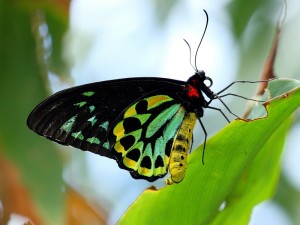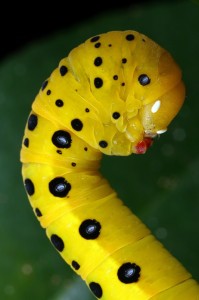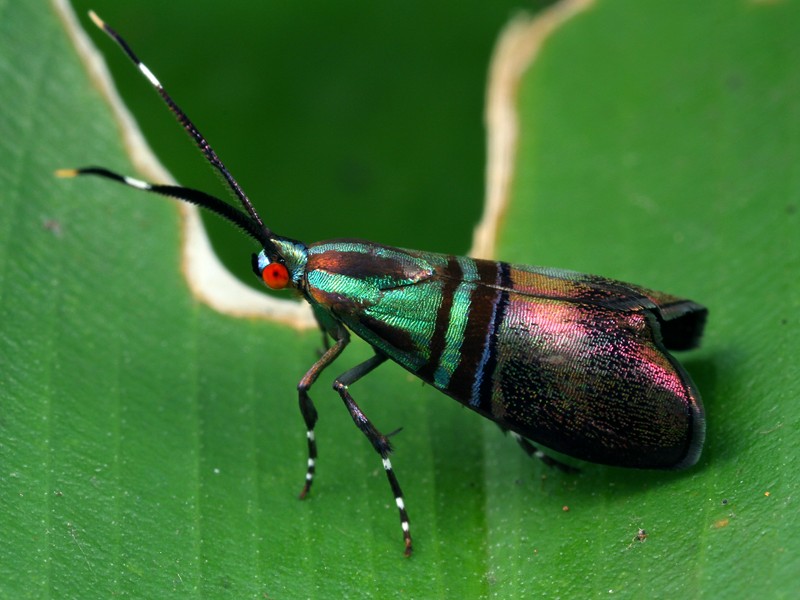Order Lepidoptera

Ornithoptera euphorion.
This is certainly one of the largest orders of insects, with the number of species in Australia exceeding 20,000. I’m pretty sure most people have seen butterflies drifting from flower to flower during Spring and Summer, and moths buzzing around outside lights at night. Aesthetically speaking, you find some of the most spectacular creatures amongst this lot. Others you won’t see at all because of their amazing ability to blend into the background.
All Lepidoptera have two pairs of wings covered in a multitude of tiny scales – Lepidoptera actually means “scaly wings”. Not only do these scales help protect the wings, but they are also responsible for the amazing colours and patterns. Some scales refract light, giving off dazzling blues and greens. Pigmentation in other scales produces all the other colours.
Butterflies and moths have a pair of compound eyes and a single ocelli (simple eye) above each compound eye. They also have a pair of antennae. On butterflies, the antennae are slender and clubbed at the ends. On female moths they are slender, on males they are usually feather-like.

Jewel Moth, Dysphania numana.
All species undergo complete metamorphosis during their life cycles. The adult females lay anywhere from a few dozen to many thousands of eggs on or near a suitable food source. After hatching, the caterpillars usually grow fairly quickly, thanks to voracious appetites. During development they moult several times to cater for their increasing size and when they are fully grown, they are ready to undergo one final radical change. Moth caterpillars weave a silken cocoon around themselves, within which they shed their skin and become a pupa. Butterfly caterpillars shed their skin to reveal a covering of hardened protein called a chrysalis, which dries and hardens to provide protection against the elements and some predators. After a period usually lasting a few weeks, the cocoon or chrysalis splits open and an adult moth or butterfly crawls out. After emerging, the adults rest until their wings are “pumped up” and dry, then they fly off to do their bit for the next generation.
The majority of Lepidoptera caterpillars are herbivores, eating leaves, grass, flowers or wood. Some are predators, feeding on insects and other caterpillars. Adults have tubular mouthparts for suking up nectar, although the adults of a few species don’t feed at all.
Moths and butterflies can be found over most of Australia, as long as there is a suitable food supply. The Sunshine Coast region is home to many species, probably because of the abundance of flowering plants and other vegetation. There may be a lot of them, but they are not always easy to photograph, caterpillars excepted. Butterflies can be seen but they don’t sit still. Moths usually can’t be seen and they do sit still. Having said that, I have managed to get some pleasing photos. I hope you agree.
~~~~~
Click here to see the Butterfly and Moth photo galleries
~~~~~

Special thanks to Don Herbison-Evans for helping me put names to many of my moth and caterpillar photos. His web site has a huge range of moth and butterfly (adult and caterpillar) pics, including descriptions and distributions. To check them out, click on this link: Lepidoptera Larvae of Australia.